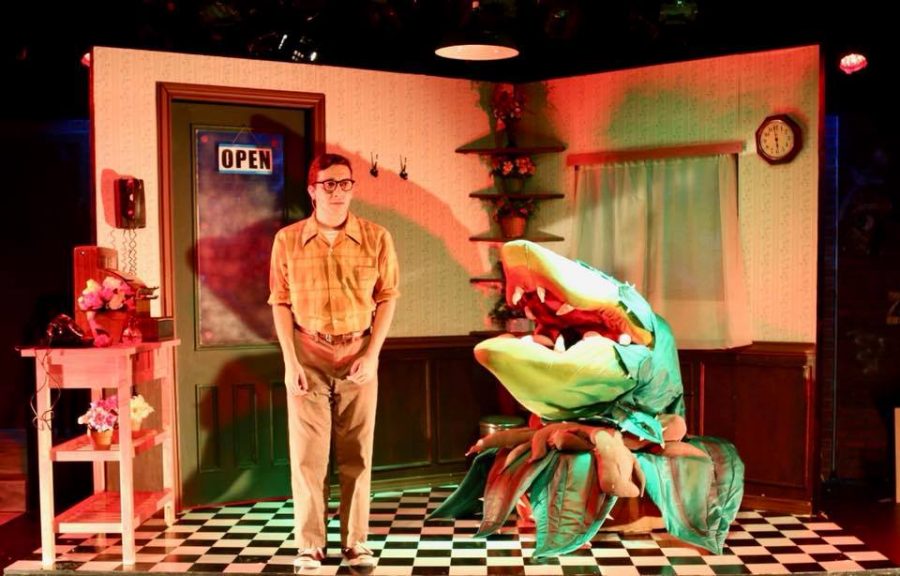Tisch Reimagines ‘Little Shop’
Steinhardt senior Daniel Youngelman plays the lead role of Seymour in Little Shop of Horrors.
November 6, 2017
“Little Shop of Horrors” exists in that sweet spot where even if one has not watched either the off-Broadway show, the Broadway show or the iconic film, it has a distinct signature style and tone that everyone is familiar with. The campy horror science-fiction comedy inspired by two pulpy sci-fi novels has brought signature villains, songs and iconography into our musical canon. Even though I had yet to see the showbefore this Halloween, I knew almost everything about it due to cultural osmosis.
But with the ubiquity comes a challenge: how does one adapt a work that is so ingrained in pop culture? When there is such a clear definition of what “Little Shop” is, how do you make it your own? How do you distill what is most important to the property while still creating something new?
This is the key question the show’s director and choreographer, Casey Whyland, and Julesy Flavelle — who portrays the main character’s love interest, Audrey — faced when tackling an adaptation with such strange source material.
The keyword both artists used when discussing their work was “honest:” They believed that as silly and outlandish as the material was, it was important to ground and flesh out the more arch, campy world of the show.
“I wanted to remain honest and true to what ‘Little Shop’ is known for, yet still be able to create characters and various journeys that were unique to the individuals involved in this production,” Whyland said. “We all agreed that while the show itself is a silly comedy and has more campy aspects to it, we wanted to find a point where we rooted it in the honesty of the circumstances these characters were in, in this time, and then build from there.”
Whyland also said the production team wanted to figure out how to use their present-day experiences to inform a story that takes place in the 1960s.
One of the central areas where this thesis of honest was tested seems to be in the character Audrey. Played by Ellen Greene in both the original off-Broadway show and the film, she captures the spirit of the show with her raspy voice, troubled-girl-saved arc and tight leopard print clothes.
Discussing her version of the character, Flavelle said that she and Casey agreed that “Ms. Greene really did create the iconic character. Audrey has such an opportunity to be something more as a character,” and that in the current climate, the team “could really bring the audience in and make them consider the reality of the pain behind Audrey’s character, circumstance, and relationships … I hope that people are as moved as I have been by this really tragic story.”
When adapting a beloved work, an artist faces roughly one million questions. Everything from explicit text to subtext to imagery, minor characters and pacing all must be placed under a microscope as the creator asks, “What do I want to say with this work?” Based on my brief discussions with two of the most creative minds of the show, it seems like the team of “Little Shop of Horrors” has a clear, distinct vision of the classic, Using the arch, science fiction and horror to talk about our world today.
A version of this article appeared in the Monday, Nov. 6 print edition. Email Carter Glace at [email protected].
























































































































































